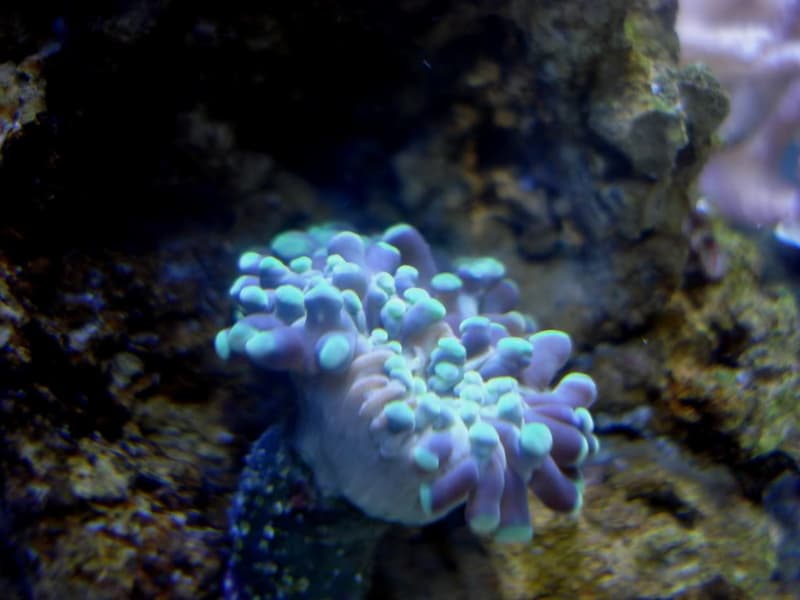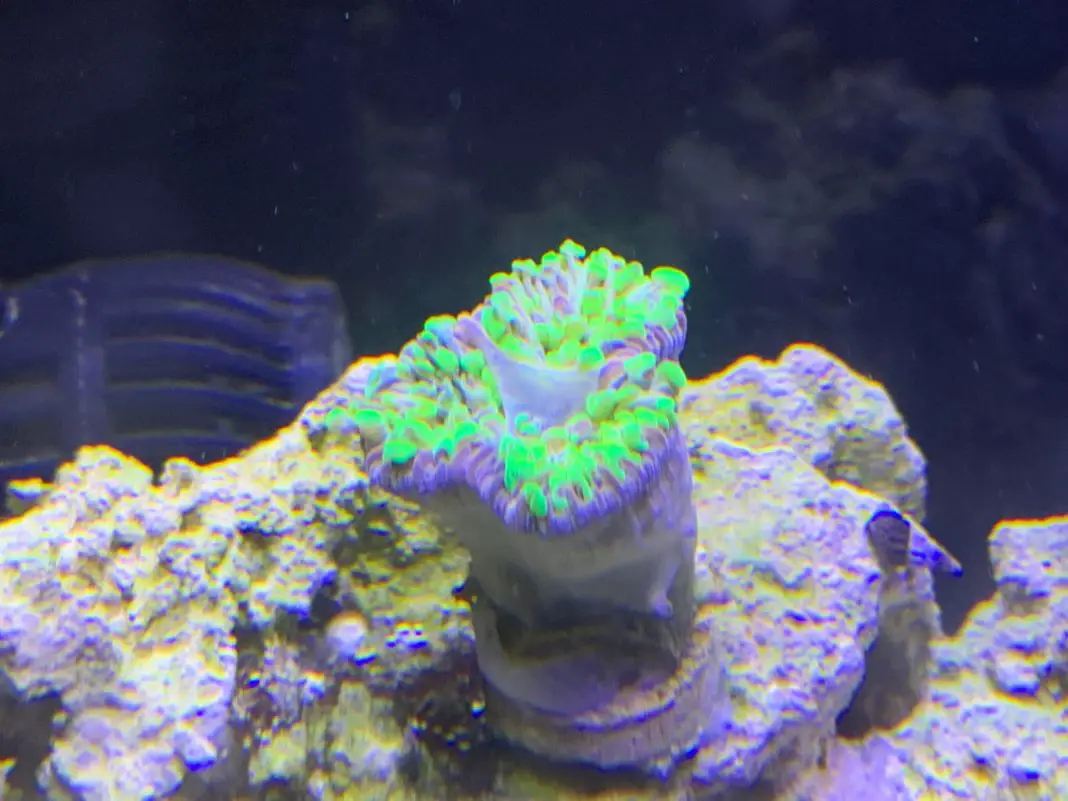Hammer Coral Splitting
The good news is that your hammer coral is splitting, which means you are soon going to be the owner of two hammer corals!
Hammer corals are relatively fast growers and are very good at multiplying, either by splitting themselves into a cell or when they move around the aquarium, as they leave small parts behind, a process known as ‘pedal laceration’.
So, if your hammer coral is splitting, it’s no cause for concern.
Why Do Hammer Corals Split?
When a hammer coral starts splitting, it can be an exciting time, especially if it’s the first time you’ve experienced it. This process is called coral fission, which happens to Fungiidae corals, like hammer corals.
The process of a hammer coral splitting occurs during the early developmental stages when they’re ready to reproduce.

How Do Hammer Corals Split?
When a hammer coral starts splitting, it’ll usually happen right down the center, through the hammer coral’s mouth. During this time, it’s common for the hammer coral to shrink, although this is normal. Once a hammer coral has successfully split, it’ll look fat after about 3-4 days.
How Long Does It Take For Hammer Coral To Split?
As the hammer coral splits, its mouth gets bigger and bigger, until it separates into two individual hammer corals. While this usually takes around two days, it can take as long as a month for a hammer coral to completely split.
White Stringy Material On The Hammer Coral As It’s Splitting?
As a hammer coral splits you may see some white stringy material. This is the coral’s mesenterial filaments trying to spill out.
Mesenterial filaments are the internal folds of tissue that create your hammer coral’s polyp structure. They’re usually white and packed with stinging cells called nematocysts. Therefore, if you notice your hammer coral spilling, don’t touch them.
Three reasons Mesenterial filaments spill:
- They’re fighting with another coral
- They’re aggressively eating
- They’re stressed
The splitting process is a stressful time for a coral, imagine if you were cloning your body and had to rip your own body in half, a few of your tissues would become exposed! However, if your hammer coral spills its mesenterial filaments, it’s nothing to worry about, as it’s your hammer coral’s response to splitting.
Should You Do Anything When Your Hammer Coral Splits?
In short, when your hammer coral is splitting, there’s not that much you can do, apart from being patient and keeping everything else within your aquarium stable.
Maintaining A Stable Environment For A Splitting Hammer Coral
- Keep the water flow low
- Reduce the light (PAR 50-150)
- Perform 5-10% water changes every few weeks
Maintain The Following Tank Water Levels:
- Temperature: 76° – 83°F
- pH: 8.1 – 8.4
- Salinity: 1.023 – 1.025
- Alkalinity: 9 – 11 dKH
- Nitrates: <10 ppm
- Phosphates: <10 ppm
- Calcium: 350 – 450 ppm
- Magnesium: 1250 – 1350
*Some hammer corals can tolerate more intense lighting conditions; therefore, you should check the specific light requirements for the hammer coral you have.
To further help your hammer coral, you can target feed the hammer coral during this time to give it more strength and boost recovery from splitting. You can feed it something that’s meaty like phytoplankton, brine shrimp or Mysis shrimp.
How To Tell If A hammer coral Is Splitting Or Dying
A splitting hammer coral will have a clean seam down the middle with healthy-looking tissues (remember that expelling the mesenterial filaments is normal), compared to a dying hammer coral will look a little worse for wear. When a hammer coral is dying, it loses its beautiful coloration and becomes mushy. Usually, the polyps become deflated for a long time and can even start turning white.
How To Manually Split Your Hammer Coral
If your hammer coral hasn’t started splitting, and you want to encourage reproduction, you can manually split your hammer coral, also referred to as ‘fragging’.
How To Frag A Hammer Coral
After picking the hammer coral you wish to split/frag, remove it from the tank. As hammer corals are similar to urchins, they may squirt liquid, therefore it’s best to grab some safety glasses or goggles for protection.
Take a scalpel, razor blade, or sharp knife and split the hammer coral in half, straight down the middle, directly through its mouth.
The next stage can be quite tricky, as you need to encourage the hammer coral to attach to a rock/some rubble and heal. The easiest way is to place the cut hammer fragments inside a container with some aquarium water and rubble.
You should leave them in the container for a few days to attach and feed to feed them some meaty food to boost their immune system.
Once they’re attached, you can place them back inside the tank. To be safe, you can place some netting over them to prevent fish from nipping or laying on your hammer coral.
With your hammer corals attached, you can now move them to wherever you want them to be within the tank, but remember that they may move if the conditions are not quite right.
Conclusion
A hammer coral splitting is no cause for concern. If your hammer coral starts splitting down the center of its mouth, it’s naturally reproducing, and you should soon have two individual hammers!
Make sure to keep the conditions stable and be patient during this process as it can be a very stressful time for a coral, although the result is totally worth the wait!








